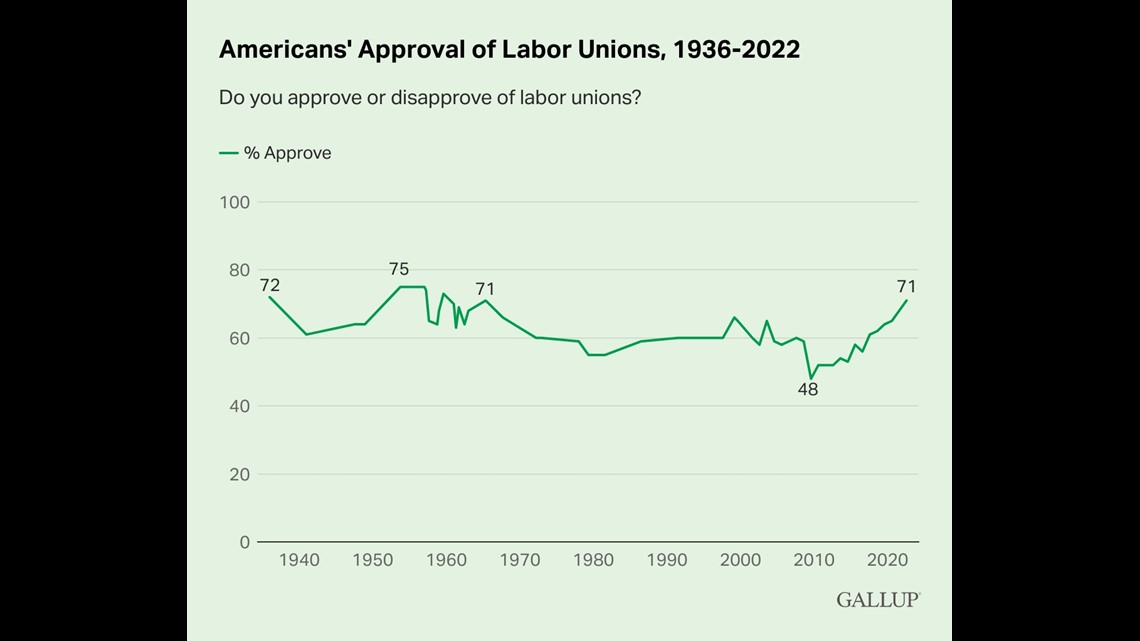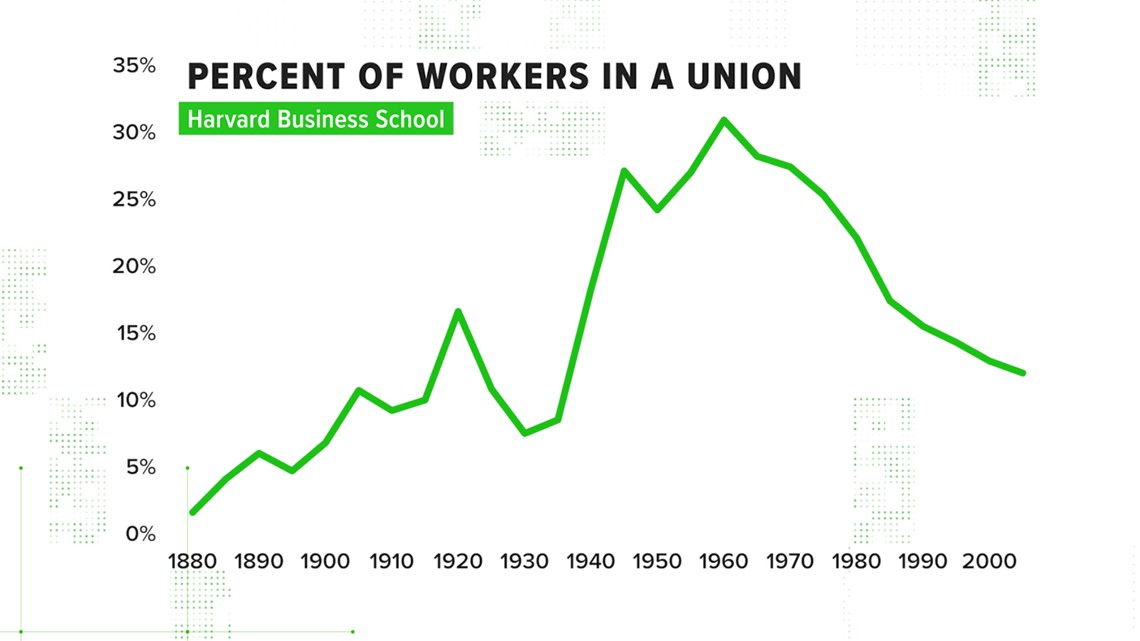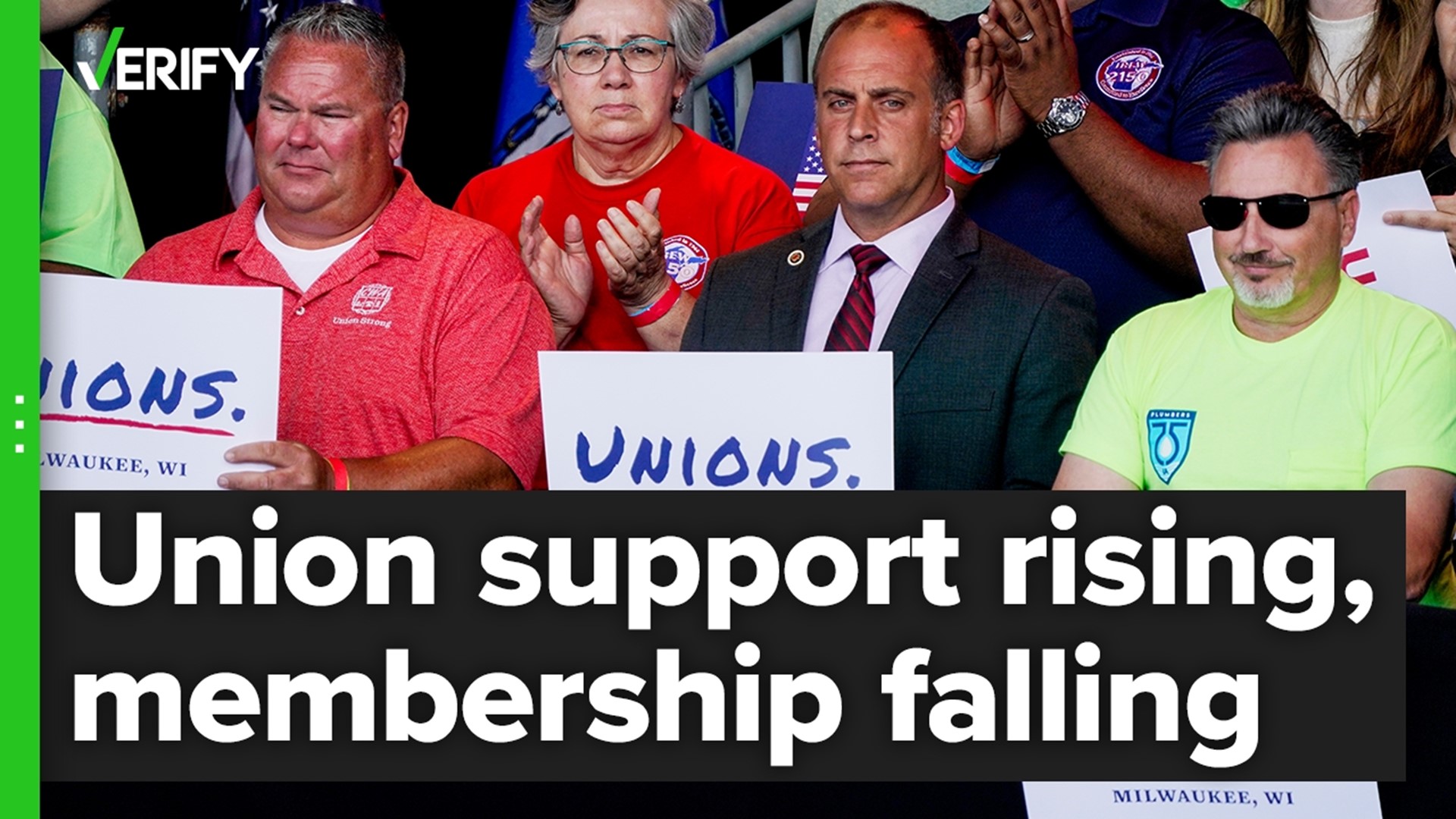Leading up to Labor Day, many pro-union groups and politicians claimed American support for labor unions has recently reached historic highs.
That’s true, per a newly-released Gallup poll, which showed 71 percent of respondents approve of unions. The number hasn’t been that high since 1965.


On Labor Day, President Joe Biden pointed to the rising support and called it “a key way we’re rebuilding the economy… to grow from the bottom up and the middle out.”
But has that rise in popularity sparked any rise in actual union membership?
THE QUESTION
Has increased support for unions translated into an increase in union membership?
THE SOURCES
Nelson Lichtenstein, Director of Center for the Study of Work, Labor, and Democracy at University of California, Santa Barbara
THE ANSWER
No. Although support for unions is rising, the percentage of Americans in unions remains at historic lows.
WHAT WE FOUND
Since 1983, the Bureau of Labor Statistics has tracked what percentage of American workers are members of a union.
The first year that number was measured, it stood at 20.1 percent. It has steadily declined nearly every year since, and fell to an all-time low of 10.3 percent in 2021, the most recent year we have numbers for.
The rate did slightly increase in 2020, because when the COVID-19 pandemic prompted lockdowns and layoffs, those job cuts disproportionately affected non-union employees, whereas a higher percentage of unionized workers kept their jobs, according to the BLS. When the economic recovery began and non-union workers regained employment, the overall rate of unionized workers fell back down.


Harvard Business School also keeps data on union membership in countries around the world, since the late 19th century. Since their data goes back even further than the BLS data, we can see that the all-time peak for union membership was in the mid-1960s, when it exceeded 30 percent.
Like the BLS data, Harvard’s figures show the percentage of the workforce in a union has been steadily declining for decades, and has recently reached lows not seen since before World War II.


Rising support for unions coinciding with declining membership isn’t surprising to labor historian Nelson Lichtenstein.
“There is no... correlation between popular support for unionism and… actual growth of unions,” he told VERIFY.
Lichtenstein says in the mid-20th century economy, it was generally accepted that the preeminent industries of the time like automaking were almost entirely unionized. But over time, membership fell for a variety of reasons and now in some of today’s biggest industries like tech, there’s no cultural expectation of organized labor.
“In industries like auto, you had 100 percent unionization, practically,” he said. “Unionism naturally declines as a proportion of the workforce as new industries come to the fore, and as new techniques are created to kind of avoid unionization.”
The labor movement has worked to undo that trend by organizing workforces not ordinarily thought of as unionized, like Starbucks baristas. Amazon warehouse employees, too, have recently organized in some locations.
“I think it's partly a product of the pandemic, it's a product of a kind of thwarted career paths… I think the pandemic created a sense that managers had betrayed their workforce, whether it's health and safety, or they gave them a raise and then took it away,” said Lichtenstein. “[And now] you have a period, basically, of prosperity, and a tight labor market. So that gives courage to workers.”
But whether that’s a sign that the overall decline in union membership may soon reverse for the long haul, or whether it’s merely isolated incidents spawning from pandemic-related conditions, remains to be seen.

